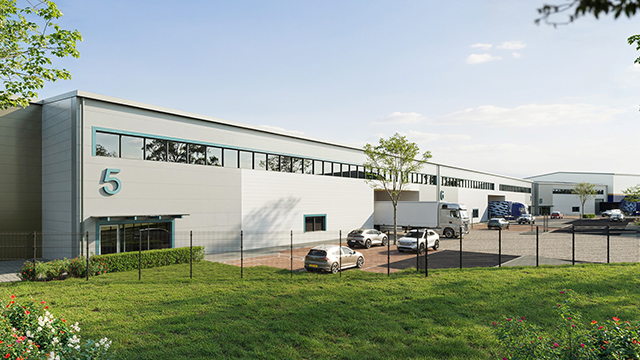Ben Derbyshire is chair of HTA Design. He shares a day from the bottom of his garden in North London, advising a modular builder, working on a large brownfield bid and reflecting on a challenging term as president of the Royal Institute of British Architects.
My day begins with a bike ride. I bought a Brompton at the beginning of my term as RIBA president and it has been a boon for nipping around town. Generally I’ll head north to do a few laps of Finsbury Park, but today I have a dentist appointment at 7.45am in Haverstock Hill.
On this autumn morning, I cross Highbury Fields and cycle alongside St Mary’s Churchyard through a series of fine open spaces through to Talacre Gardens on Prince of Wales Road, with dedicated cycle routes most of the way. The 18th and 19th century developers of this part of London have left a wonderful legacy of streets and squares eminently adaptable to a post-pandemic 15-minute city.
I’m back home for breakfast by 9.00am. My wife Jane and I each bought one of a pair of pretty rubbish semis in Corsica Street, originally the stabling mews for the grand houses on Highbury Place, when we brought two families together as divorcees 15 or so years ago. The symmetrical arrangement of rooms overcame some of the step-sibling rivalries, as two boys and two girls were allocated identical rooms. We have been in a state of more or less constant adaptation to the changing needs of now grown children ever since.
It’s an accidental demonstration of the virtues of “long life, loose fit” housing (a phrase coined by Gordon Graham, past RIBA president) which may yet see us out.
I commute to the bottom of the garden where I have a self-contained studio – a permitted development replacing a tumbledown shed discovered behind a curtain of ivy by our youngest when we first moved in. A stencilled sign on the adjacent garden wall still says “Danger, No Smoking, Highly Inflammable”, referring to earlier occupation as a glue factory rather than anything incendiary I might get up to.
This has been my workplace since March. Like many others, we transformed our establishment from 230 people in four studios across the UK to the same number in a diaspora of bedrooms and kitchen tables.
Although our studios at HTA Design have been reopened since August, most of us are finding that a new blend of home and office working is slowly emerging as the pandemic runs its course. For me, in my late sixties, and with asthma, setting up a garden studio long before Covid-19 (now crammed with my books, CDs and pictures), was a godsend in lockdown. Just at the moment, with cases on the rise, there are more days spent in the garden.
I take a call first thing from the recently elected president of a professional institute (that shall remain nameless) looking for survival tips based on my time at RIBA. I pass on my late father’s advice: “make sure you make friends”, and we agree that these roles are highly political.
Above all, perhaps, it was that understanding that enabled me to cope with a challenging change agenda at RIBA, which some took to be taking the profession in the wrong direction, while others wanted to go further and faster. In the end it’s only a clear political conviction that can carry you through. I was never able to say that my time at RIBA was fun, exactly – but I do consider it to have been worthwhile.
One of my roles at HTA Design is to chair our internal design reviews. After lunch we consider four projects in online presentations. These reviews have worked surprisingly well during lockdown, as the virtual medium allows participants to log in from wherever they are.
I lead the discussion on the masterplan for a jigsaw of sites in Southwark where we are acting on behalf of some, but not all, owners. It is a complex task of seeking mutual benefit among competing developers.
The review team also considers approaches to the refurbishment of three residential towers in Reading, where we have just obtained planning approval for a zero-carbon infill scheme around them. We examine approaches to consultancy for a modular offsite developer/manufacturer seeking to optimise their product, and comment on a bid for a large brownfield development opportunity in Enfield, where we would be working among a veritable hotbed of talent, should our consortium be selected.
Afterwards, I find a little time to progress a book I’m writing. The manuscript is due at the publishers in two months and I have to steal every moment to make the necessary progress. It’s about housing design and aimed at an audience of students and young professionals, so it’s really about the future with an emphasis on user involvement, placemaking and human wellbeing.
When I retire as a partner of HTA Design, in March 2023, I will have been at the same practice in all its various guises for 50 years. So the book would be a great opportunity to sign off on a half century of practice with all its compromises, failures and, I hope, some successes. I’d like to think I may be able to support a sense direction for my successors in our practice’s ambitions to deliver multidisciplinary urbanism at a time of tumultuous change.











